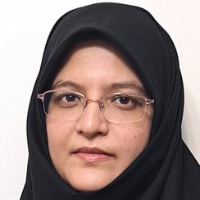Estimating the Changes in the Agricultural Lands Using Satellite Images Case Study: Fariman Dam Downstream Basin
A. Noori , J. Omidvar , F. Modaresi * , K. Davary , S. Nouri , A. Asadi
Limited fresh water resources and access to these resources as well as providing food security for the growing world population have led researchers to make extensive efforts in the field of optimal management of water consumption and determining the cultivation pattern in different regions. Therefore, identifying cultivated crops in a region and determining their area can be very effective in land management and water allocation in these regions. With the growth and advancement of technology in the field of satellite and remote sensing in recent decades, the use of satellite images in order to identify types of land use and types of cultivated products has expanded greatly. Sentinel-1 (radar) and Sentinel-2 (multi-spectral) satellites have been very popular in agriculture due to their improved spatial resolution (10 meters) and appropriate time resolution (5 days for Sentinel 2 and 12 days for Sentinel 1).
The studied area is located downstream of the Fariman dam in an area of 22.51 square kilometers (5122 hectares) and the central coordinates are 35 degrees 41 minutes and 59 seconds north latitude and 59 degrees 50 minutes and 49 seconds east longitude. In order to classify satellite images and produce crop maps, ground observation data is needed to train the classification model and also evaluate the accuracy of the results. For this purpose, sample points were taken from different land uses in the region, using GPS. Since it was not possible to take enough samples for all land uses and crops in the determined border, a larger sampling area was selected. Then, all collected data were sorted and for each class, 70% of the data was randomly used to train the classification model and 30% was used to validate the obtained classification results. In the present study, Sentinel 2 satellite images for the first 6 months (crop season) of 2021 and 2022 and digital elevation image (DEM) of the study area were considered. According to the surveys conducted and the reports of the agricultural jihad of Fariman city, the main crops cultivated in the region include maize, tomato, sugar beet, wheat and barley. Therefore, according to the phenological stages of these products in the region, the appropriate time series of images was selected. The accuracy of the classified map was evaluated using the Kappa coefficient and overall accuracy.
In order to identify and separate the land use in the study area according to the major cultivated crops, first the agricultural calendar of the crops was determined. Then, satellite images were selected based on crop cultivation period. Based on the evaluation indexes of commission error, omission error, overall accuracy as well as the Kappa coefficient, it was observed that the identification of classes and land use was done well and with high accuracy, so that the overall accuracy for the classification map of 2022 is equal to 0.97 and the kappa coefficient value was 0.94. In order to compare land use changes during the two years 2022 and 2021, classification was also done for the images of the crop year 2021. Since the training samples of agricultural crops were not available separately and in sufficient numbers in the crop year of 2021, the classification map of this year was produced only based on the type of land use, and all crops in one class entered the classification model training process. The values of overall accuracy and kappa coefficient in 2021 were obtained as 0.97 and 0.95 respectively. According to the obtained results, the area of the orchard class has increased since 2021 compared to 2022. After repeated field visits to the study area and investigation of some land uses that had been changed and turned into orchard use, it was found that in some areas in 2022 there was the growth of villa gardens and in some areas the farmers have converted cropland to orchard (construction of an orchard). Even in some cases, the old orchard in the region was destroyed by the farmers and the land was fallow for 2 to 3 years (2021, fallow). In 2022, the farmer built a new orchard. It is also necessary to mention that fallow lands are included in the soil class depending on whether they are newly plowed or have no vegetation, and if weeds have grown on these lands, they are included in the rangeland class.
The effective management of water resources from dams for agricultural purposes necessitates the identification of land use downstream of the dams, along with determining the types of crops and their respective areas. In this study, Sentinel 2 satellite images were employed to classify and delineate land use associated with agricultural cultivation downstream of the Fariman dam in Razavi Khorasan Province, spanning the crop years of 2021 and 2022. The results indicate that the Sentinel 2 satellite demonstrates a high capacity to differentiate between various types of land use and crops. The generated map depicting changes in land use and crop cultivation areas can be instrumental in water use planning and the allocation of water resources.
پرداخت حق اشتراک به معنای پذیرش "شرایط خدمات" پایگاه مگیران از سوی شماست.
اگر عضو مگیران هستید:
اگر مقاله ای از شما در مگیران نمایه شده، برای استفاده از اعتبار اهدایی سامانه نویسندگان با ایمیل منتشرشده ثبت نام کنید. ثبت نام
- حق عضویت دریافتی صرف حمایت از نشریات عضو و نگهداری، تکمیل و توسعه مگیران میشود.
- پرداخت حق اشتراک و دانلود مقالات اجازه بازنشر آن در سایر رسانههای چاپی و دیجیتال را به کاربر نمیدهد.




